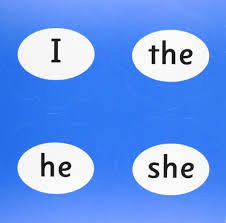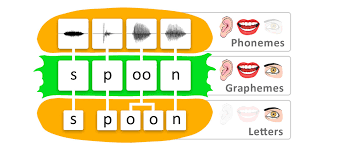The Skills and Phases on Jolly Phonics Training
In their formative years, the children learn the most crucial life skill – Learning to speak, read and write. This learning of a language in the early years is a slow and meticulous process as it will form the base of the rest of the life of your child
Jolly Phonics is one of the many but most effective schemes of teaching Phonics to young children. It is a fun and child-centric approach to teach literacy and it is done through synthetic phonics.
Read about the difference between Jolly phonics and other phonics schemes
As Jolly phonics is a child-centered approach, it has proven to be the most successful method of teaching literacy all around the globe. So it is no surprise most parents are moving to enroll their children in a jolly phonics program.
But How does a jolly Phonics Program work and how to teach the child using jolly phonics?
When it comes to teaching a language using Jolly phonics, the trainer focuses on 5 major skills, and these skills are taught in the 6 phases.
Let us understand the 5 Key skills and each of the 6 phases of Jolly phonics learning.
5 Skills taught in Jolly Phonics
1. Learning the letter sounds
There are 42 sounds in jolly phonics that are made of 26 letters and digraphs. Digraphs are two letters that are read together because they make one sound. These 42 sounds are learnt using a story and an action. These 42 sounds are taught in 7 groups, which are grouped in a way that children can learn to form words as quickly as possible.
2. Learning letter Formation
To learn letter formation children need to learn and master the pencil grip. They are taught letter formation by drawing the letters in the air and using other multi-sensory tools.
3. Blending
Blending is the process of saying the individual sounds separately and then blending or running them together for a single word. They are also taught blending with Digraphs for more complex words.
Blending in Jolly phonics

4. Segmenting
This skill is about identifying sounds in words i.e reverse of blending. Here we take a word and break it to identify the different sounds in the words. Here sounds are converted into letters.
5. Tricky words.
These words are words that can not be segmented and blended. Children use whole word recognition for these words because these words have some irregular phonetics knowledge that children are not aware of.
The 6 phases of Teaching Phonics with Jolly Phonics
Phase 1
Phase one of Phonics starts with listening, vocabulary, and speaking skills. In this children explore and identify the sounds around them. In this phase, a lot of vocabulary games are introduced along with Rhyming and action songs. The trainers in this stage start segmenting and blending the words for the child to get used to the idea.
Phase 2
At this stage actual or the core learning starts. Children start learning sounds and are introduced to the first 19 sounds and their corresponding. These sounds are not taught in alphabetical order but in an order that will help children to make words more quickly. So more commonly used songs are taught first. The first sounds taught are – s,a,t,p,i,n,. Followed by this they are taught m,d,g,o,c,k, and so on.
In this stage, they also learn how to segment, blend and put together different sounds to form a word. They are also introduced to non-decodable words/ tricky (words that you can not sound out phonetically) like I, Go, and No.

Phase 3
In this stage, the remaining 7 letter sounds are introduced. Children are then introduced to Digraphs and Trigraphs.
Digraphs are sounds made using two letters and trigraphs are sounds using three letters.
https://www.theschoolrun.com/What-is-a-digraph
Children also introduced to more Non- decodable/ tricky words like He, She etc. Letter names are also taught at this stage using alphabet song, while still using sounds.
Phase 4
In this stage, the children are encouraged to segment and blend more complex and longer words. They are also introduced to spelling the words (mostly phonetically) and more Tricky Words are introduced.
Phase 5
In Phase 5, children are introduced to alternative Graphemes to sounds they already know and alternative sounds to graphemes that they know.

Graphemes and Phonemes, Jolly Phonics
They are also taught to Split digraph and more complex Tricky words.
Phase 6
Phase 6 is focused on helping the children become more fluent readers and developing spelling accuracy.
As you can understand teaching a language using jolly phonics is a long and meticulous process. Each phase of teaching requires trainers to engage in multi-sensory activities.
So if you are a parent who wants to teach their child the English language at home, it is advisable to buy or invest in the tools required for multi-sensory training.
If you are a phonics trainer who wants to learn teaching with Jolly Phonics, you might already know many things, but since jolly phonics is a child-centric method of teaching, it has to be made fun for children.
In any case, learning to read and write is an important phase in a child’s journey. If you are looking forward to becoming a Jolly phonics trainer, Click here

